Text
week five: hanover principles
- Readings folder Week - select 2 of these and discuss their implications for your specific field of practice. Find a further 2 examples of contemporary practice in your discipline which you see as engaging with some or all of these principles -make connections to some of the historical precedents and frameworks that we have discussed.
Principle one:
Respect relationship between spirit and matter: This is the most human link to earth and nature. A wide context to time and place. A Spiritual connection with nature can add an element to recovering and helping the environment, since we have been placed on a planet an environment that isn’t ours we need to become one with it. I think that is more spiritual than anything. Being able to experience the feeling of belonging but the way we are treating our planet, I don’t think we will get to this point any time soon if we don’t start change now. Our community, dwelling, industry and trade have gone far away from connecting with our planet. We need connect these two together, be more conscious of these impacts our ways are having. We are separating ourselves from the area the gives us everything that we have.
This links really well to Williams Morris’s idea of becoming one with nature and being more appreciating towards it. Back in his time there was thousands of years where man and his environment were one. Then capitalism came and interrupted it. His works create the idea and show the beauty of Gods creation, they need to be treasured and valued. Due to Capitalism we have come in and destroyed that. Pushed ourselves away from connecting and being one. People became greedy. Through the Hanover Principles they are bringing lighting back into this topic. Creating this idea in peoples heads and talking about it more. This land isn’t rightfully ours yet we have come in and made it. Not turned it in a beautiful place yet again used it for ourselves, using it to create things that are destroying it, things such as plastic a chemical material that we have created. To our eyes is natural but is destroying our wildlife and planet. “ What nature gives us, and what a reasonable man can make out of the gifts of Nature for his reasonable use - as the key to what today we call sustainability” - But we have ruined the idea of sustainability, created it and manipulated it to something else. We need to bring it back, bring sustainability through nature and become one with it. Arts, Design and Hanover Principles are some of many, many things bringing light back to this idea. This is the most human way of getting back our environment, starting a new wave.
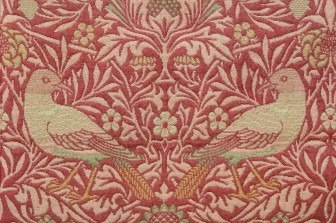
Principle two:
Eliminate the concept of waste: Earth is both the context and the material. We have made and manufactured so many new materials, gases and energies. These have benefited our human development but yet causing a mass destruction towards our environment. Linking into Hanover’s Principle eliminating waste. This is such a big challenge we are facing. The Hanover”s principle bring light to many ways we should follow. Ideas that could help with managing our waste system. “For how the site can be adapted to post-fair requirements.” Using design as a implication of change. “Building materials need to be considered for their broadest range of effects, from emotive to practical.” Gathering more of an understanding to the material we are using, the harm it could cause to our environment. Spreading and talking more on recycling, instead of putting products back into our environment (water, forests ect) but using them as new and better products. Instead of creating new things, re-using and compositing.
This links really nicely to the Plastic Photography I have looked at. Through Chris Jordan- Exposing Consumeristic Culture.
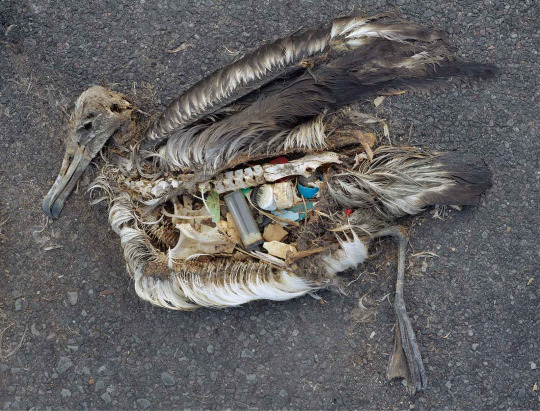
This is something i would love to follow and something I think is heart breaking. It shows what we don’t see, which I have talked about a lot. What we use and what we throw away goes somewhere. We don’t see this. Chris’s work follows a structured plastic and waste inside and organised in a dead bird. This happens all the time, our waste ends up in places due to littering. In oceans, forest and worse of all, inside wildlife. Wildlife see these things, not educated on what it is and eats it, the illusion of food. We need to be more aware of where our waste goes. More aware of how much we produce. Art works and Photography like this helps show the reality of our mass production. - In further projects I would love to follow this idea. Combining still life and showing things our world has done such as mass waste. Ecological reality like waste management need to be brought to attention more and more so we can do something about it.
0 notes
Text
week five: green consumer movement
4. Green Consumer Movement. Further research this topic to identify key principles advanced in the 1990s. ( reference: Introduction to the Green Consumer Supermarket Guide, 34, The Design History Reader - on closed reserve at library ) Find 2 examples of contemporary art/ design practice which either raise awareness of these issues through communication strategies, or practice them as part of an up cycling production strategy
“The beginning of the modern environmental movement can be traced to 1962 and Rachel Carson's book "Silent Spring," which first raised widespread public awareness of the impact of human activities on the environment. The movement gained momentum in the U.S. and Western Europe in the 1970s with the establishment of Earth Day and of the Green Movement in Germany.”
Furthering research, environmentalism became a common word used for this movement. Through this movement a lot of advertisers responded. Focusing on environmental issues, promoting messages such as environmental awareness towards consumers. This first started to appear in the 1970′s. The green movement added figures and images to help make an emotional appeal to everyone. Show what has been done and what needed to be done. Keep America Beautiful was a public service announcement that was classed as one of the best ads. These sorts of things were part of the Green movement. Creating more and more awareness through our common uses, day to day.
https://adage.com/article/adage-encyclopedia/environmental-movement/98455/
Two artists who help with the Green consumer movement:
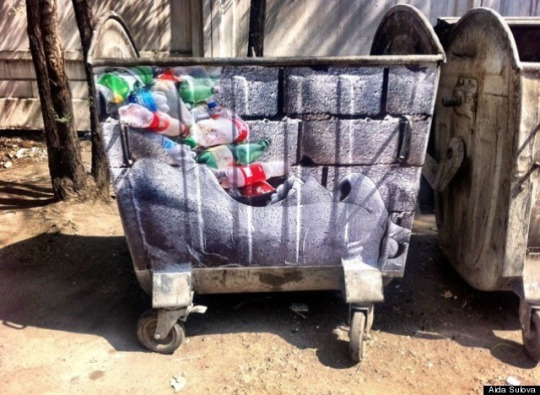
Aida Sulova, Trash can’s:
Using garbage bins as a canvas, printing a mouth and rubbish. “remind people that what they throw into the world, eventually ends up inside us.” Referring to the idea of the chemicals in the air, we breath. The plastic we throw away, our animals will eat it. Eating them, ends up inside us.
I think this idea is brilliant, something we see almost everyday putting this idea right in front of our eyes. Using this to show what is happening. With the green consumer movement using ads to create awareness, this is another twist in the 21st century. Not an ad but like I said something we use, see and look at everyday. Putting the idea in our minds about our rubbish use and the impact on our environment. If we see this everyday, we will become more aware. Using less plastics, being more careful on what we use. Composting. Such a simple but every effective art form. - My major, I could go round and find art like this. Photographing it and putting in on social media or other places. Spreading it round and helping bring this to attention. What happens to our waste and bring it to peoples attention what we should be doing. Inspiring them and creating awareness of something that is very important, all through photos.
Paulo Grangeon’s 1,600 Pandas:
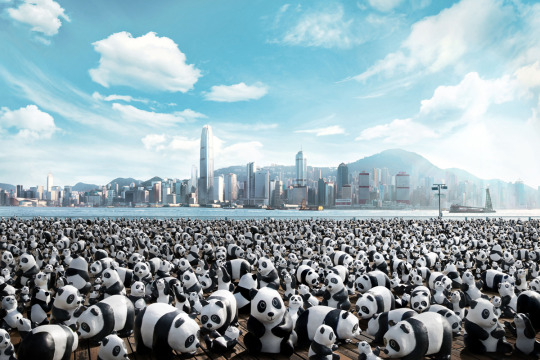
“Pandas on Tour,” he created 1,600 papier-mâché bears meant to represent the actual number of pandas left on the planet (recent estimates actually place the number slightly below that, at 1,596).” - Through Photography and Art, Paulo has created these amazing sculptures to show how little of this wildlife we have. Getting people to see how all our Panda can fit in one area is quite sad. Helps people to understand the impact this wildlife is having. Due to our deforestation and our impact on their environment we are ruining their way of life. Destroying the only things they have survive. “Habitat loss and fragmentation remain the gravest threats to the survival of the species.” This is such a creative way of showing what is happening. These pandas deserve a home that we aren’t giving them. Expect using it for our own good, greed. Art projects like these and using photography to spread it around the world will really help impact people. See a visional rather than reading helps more people. Different people learn differently and this is a way of catering to them. I am not sure if Paulo took this photo himself but if so it is combining all these new principles, a new way of helping our environment and wildlife, a new technology...
0 notes
Text
week five: photography of plastic
3. Identify and propose a design/art strategy within your discipline which offers a critique on waste plastic, and/or at the same time utilises waste plastic as resource.
Through my photography I would propose photographing plastic. Since I am a photography major and love the art of photography. I would propose a strategy through getting people to see what they don’t see. Following my past research into plastic photography artist such as:
Craig Ferguson
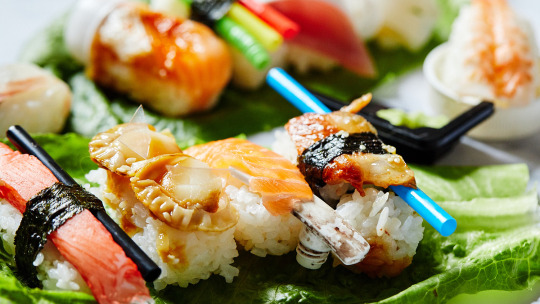
These artist bring plastic into everyday things, images we can look at and until we look closely we can’t see it. Such as Ferguson sushi, lolly pop sticks. Building the sushi around something we just throw away and don’t give a second thought about. I like this take on plastic awareness with photography but if I were to do a project on awareness. I would lean towards photographing of where the plastic goes. After we throw away the plastic, like I said we don’t really think about where it goes, let alone see. These plastic plants are hidden away from the eye, not shown. I feel if more people were aware of how bad these areas are and the damage they are causing to our land. I feel that would motivate people or start a change. Due to plastic straws and plastic bags causing harm to turtles. Look how far we have come with this, let’s keep it going. Plastic containers, what about glass. Plastic bags, what about all bags are reuse-able and easy. We are so use to plastic being a natural material in our eyes, let’s change that. Create awareness on how bad not just the chemicals but that fact it doesn’t compose. The more we use the more harmful it will become. Plastic will be here longer than we ever will be.
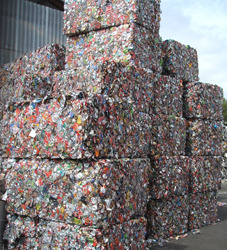
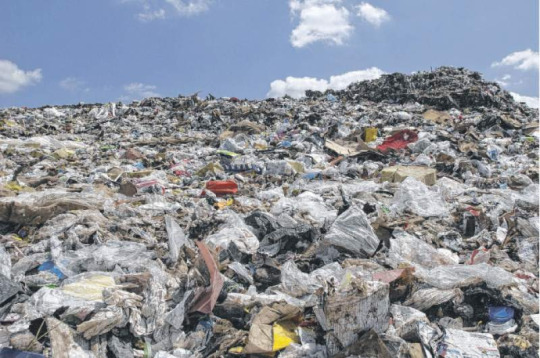
The photos above would be something similar that I would follow. On a bigger scale, photographing how big these landfills are. Showing how we store these items and showing a time series. Giving people the awareness on how this will never go away. The most important thing we need to do is stop using it, stop adding to it. - “WASTE: we send around 2.5 million tonnes of it into New Zealand landfills each year. While we may think that we are a relatively “clean and green’”country, New Zealand is producing more waste than our planet can cope with.”
http://gisborneherald.co.nz/iamyouth/2773030-135/waste-not
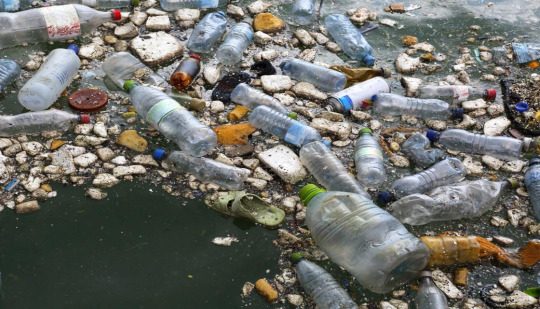
Another way I could swing this this idea would be to do a similar to this photo above. Showing that not all plastic goes to a place, it could be spread round. Damaging the environment more. Polluting our waters, causing harm to our animals. Showing people the idea of that they need to be more careful on where they leave this material. Not talking so much on the material itself. But more towards the idea of leaving plastic a harm material in one place. Not spread all around our environment. This would help create awareness of where our plastic is going, bringing more light to it
0 notes
Text
week five: the consequences of plastic
2. Plastic -- identify the concerns raised by Meikle in 1990. ( read Meikle reading for this week ). Identify some of the issues we now face in relation to plastic - locate visual examples which evidence this. ( also watch the UN video Ocean Plastic- see link below)
The concerns raised in The Consequences of Plastic are following the idea of our earth made of objects were there for use, yet we create a material that became natural to us. After World War II so many new plastics were created, covering our toys, in our everyday containers ( laundry, garbage), covering all our foods. It has been used for so many things and seen as “the material of a thousand uses.” Able to follow many different shapes, sizes, textures, hardness and colour. This was such a “big discovery” for many people. We didn’t realise or think of the consequences of such a chemical material. People say the bigger picture in plastic as no harmful to our environment but yet a “great future in Plastic.” Its infinite uses drew people in, made it the ideal and easiest thing to use, versatile. Plastic had become naturalised, seen as a material that was given to us by earth. Not a chemical that we have to burn down and that can never be composed back into the earth or help any growth.
A couple of decades later people started to see the impact of plastic, the chemical imbalance with earth and how it will just pile up. (we are only started a massive change many more decades later). Someone linking cancer and plastic together, the same principles. “Self-destructiveness in the high-technology society.” Norman Mailer created this idea, talking about this to get a better understand out to people, as plastic was just part of our way or living. “divorced ourselves from the materials of earth, the rock, the wood, the iron ore.....we looked to a new materials which were cooked in vats, long complex derivatives of urine which we call plastic.” - Plastic has invaded all aspects of our air. Polluting not just our seas but now our air with the chemicals used to produce such a thing. “A world in which all could live even if none could breathe”
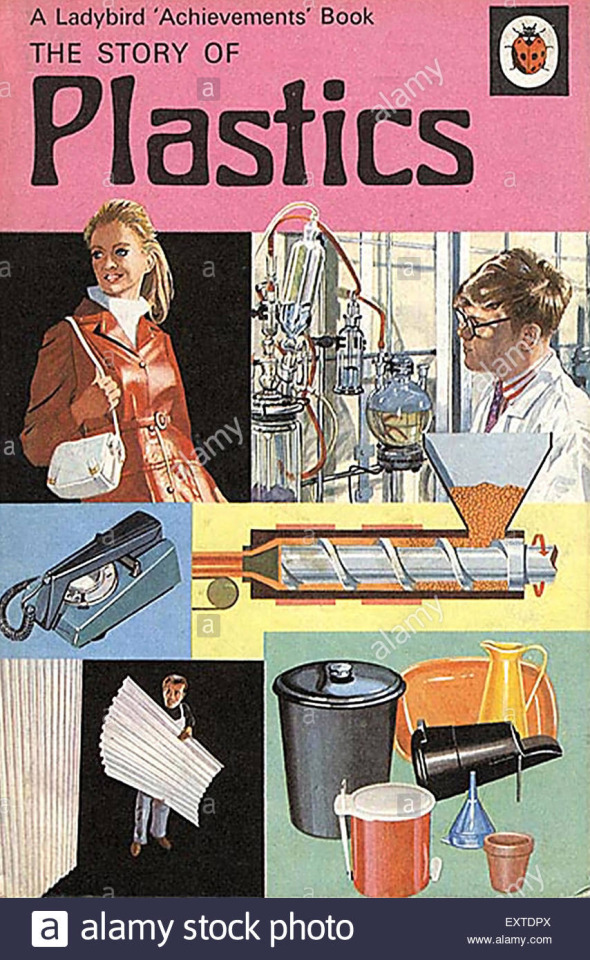
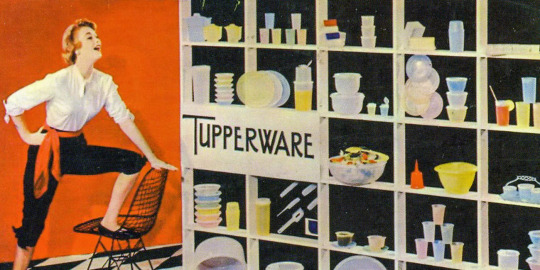
I think this last quotation is indicating that we think plastic is something we need to survive, something that is made and NEEDS to be used in everyday things. When in fact it doesn’t, it is slowly but surely destroying our environment. It has become such a natural resource for us that we think we can’t live without it. Even if we can’t breath for much longer. This relates on such a big scale towards our still current situation of this topic. We are spreading such a material into our oceans which is now effecting our wildlife horribly. Many people has talking about this and it has become a very big campaign. Save The Turtles. With things such as plastic bags and straws entering our waters. Killing and hurting our them. With a super market ban on plastic bags, which has made a difference, still we have things such as plastic covers, still other company plastic bags and many other things entering our seas. We are still hurting our ocean animals with our “natural material” We have create a material that we can’t get rid of and we are only starting to see the consequences now when it is almost to late.
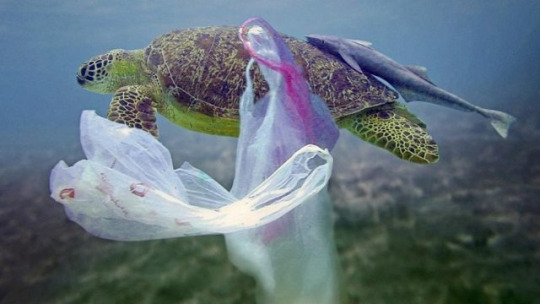
0 notes
Text
week five: re-reading spaceship earth
What s relevant now, linking Fullers reading to what is still happening now:
The idea behind Fullers’ “ Spaceship Earth” is still very relevant to todays 21st century as I touched on in week four. The idea behind the woods and how man will climb and go through anything to get to a destination quicker. Humans have found on earth they can get this thing quicker, not taking what is given to us. Instead using it against Earth. A 21st century example would be how we gather food. We instead of taking growth and vegetation as our food source, we have created a quicker way to get things. Using factories to make food which isn’y right for our bodies, creating plastic to hold these items. Not taking what nature gave us. Such a unique way of living to us, if we were to become one with nature again. So many things we have create to take the quickest route.
I think this reading needs to be spread around more, it is a great way to explain to people our greed and our need vs. want. A story that shows us what we have done. Something everyone can relate to, as well as me personally. I do as a human want to take the shortest route to get some where. My needs aren’t balanced with my wants. I need things that I don’t need and want things that I need to survive. Such as technology, the latest device. I feel as though I need this item, finding the quickest route to it. This links back to first things first, manifesto on how we see advertisement. I believe we need to take a step back and look. Compare the things we think we need to things we actually need. Such simple things in our eyes but such essentials in our health. Food, water, shelter. Family and Friends. But we look at what is being created as short cuts to these things and we think we need them because it is an “easier” way of getting it.
0 notes
Text
week four - second chosen work
3. Select 2 other works, texts or events from the sequence identified in the Introduction to the Sustainable Futures Section ( Section 6, Houze, R. and Lees Maffei, G., ( 2010 ) The Design History Reader, and from that discussed in class. Select an area of particular interest to you. Research this further including investigation into contexts and discussion of images. Make connections between theory and practice. Identify the concerns/ issues being critiqued / addressed and the authors/ designer’s/ artist’s point of view or response.
Operating manual for Spaceship Earth: R. Buckmister Fuller (1969)
Spaceship Earth follows the idea of how it has been made perfectly for us. Everything we have around us is for us, “Spaceship Earth was so extraordinarily well invented and designed that to our knowledge humans have been on board it for two million years not even knowing that they were on a board a ship.” (two million years, when this was released in 1969). The article/reading begins to them talk about our relationship with the sun, how it has been positioned so perfectly. Not to burn us but give us heat and warmth. “Our sun is flying in company with us” Talking more on the different things that are on this Spaceship Earth. Things such as the sea, vegetation, this we should be grateful for. Things that keep us alive, healthy and thriving. Fuller goes on to talk about how we have all these things, spaceship earth is our support system yet we are mistreating it. Abusing and polluting the world that is perfect for us. Spreading Chemicals destroying the beautiful planetary spaceship we have. Fuller uses many examples of this, how we have cars and technology. We know that if we don’t take care of these items that they will go to ruin. “Like an automobile, you realise that you must put oil and gas into it, and you must put water in the radiator and take care of the car as a whole. You begin to develop quite a little thermodynamic sense. You know that you’re either going to have to keep the machine in good order or it’s going to be in trouble and fail to function.” We as a human race haven’t been treating our home like this. Not taking care of our surroundings. Using them to create machines and devices that will destroy it more. Taking it as nothing when it is our home, the thing that can keep us alive. We need to “service” this spaceship earth. - I think this is such a great comparison, relating the world, our environment to this idea of what we take care of. Spaceships, technology, things we care for so much. This is such a powerful metaphor.
We are given these instruction on how to care for things like our food, cars and ourselves. But we didn’t get instruction for Planet Earth. We have had to go through many years of destroying it to realise how to take care of it. Even in the 21st century we are still improving our care towards our “spaceship” with no instructions we are working out ways and how we can communicate these ideas. Through design, photography and social media. Using them to project ways to reverse or stop what we are doing. “ Lack of instructions has forced us to find that there are two kinds of berries - red berries that will kill us and blue berries that will nourish us.” - This is a such a strong way of talking about our Planet. Without what we have and have developed, we had to start from the bottom. Working out on this earth what was for us and what wasn’t. But what was on this earth for us is much greater than what wasn’t meant for us. But then again there is such a fine line with this. We as humans has crossed this massively over the past 100′s of years. Getting greedy with what was for us and wanting/needing what wasn’t. Touching and using things that were meant t be left alone. Destroying them and causing so many horrible things. Organism tat we shouldn’t touch, going extinct due to our greedy ways. Using parts of these animals for getting more money. Horrible ways that have become natural to many of us. The author goes on to talk about how man taught themselves, the intelligence that we have to work out this Earth we are on. The once went through the woods like we have done finding the shortest way through. The author talks about how the idea of men finding the shortest way through things, we don’t want to take the path given to us. We have to find something quicker.
I think Fuller has done such a great job with representing our human race, relating our earth to something we would take care of, a spaceship. Telling a story about the woods how we will climb over many things just to get to our destination quicker. I think this was a perfect way of representing our world and a brilliant way to help people understanding the impact we are having on this earth. We will change what is given to us to suit us. Not listen and look at what has already been given us. But use it against and create things that our seen as better. When in fact we already had the things we need. We as humans need to step back and look at what we have. Such a beautiful world but we are using our greed to slowly destroy it and change it to what we think it “should” look like. I couldn’t agree more with what this Author is talking about, I think we need to use design, photography and many 21st century thing to good, creating posters of this story, this writing. Taking photos to represent what we are doing. I think we need to use what we have developed to bring this reading back to life because I think it is one of the best ways of representing what we are doing to our Spaceship Earth
0 notes
Text
week four - first chosen work
3. Select 2 other works, texts or events from the sequence identified in the Introduction to the Sustainable Futures Section ( Section 6, Houze, R. and Lees Maffei, G., ( 2010 ) The Design History Reader, and from that discussed in class. Select an area of particular interest to you. Research this further including investigation into contexts and discussion of images. Make connections between theory and practice. Identify the concerns/ issues being critiqued / addressed and the authors/ designer's/ artist's point of view or response.
The First Earth Day 1970, The History of Earth Day:
Before the first earth day, Americans weren’t aware of what they were doing to their environment. Americans were leaking gas, polluting the air with smoke. Americans were use to this smell in the air and “the word “environment was a word only used in a spelling bee.” - American weren’t aware of the consequences, they were oblivious to it all. Until Rachael Carson released a book called the Silent Spring. This book became a New Yorks best time seller in 1962. This book helped raised a lot of awareness about what is happening to the environment through human ways. Silent Spring sold over 500,000 copies over 24 countries. This brought a massive concern to many people and helped them understand the link between pollution and public health. Also creating public awareness about living organisms they were effecting too. “Earth Day 1970 gave voice to that emerging consciousness, channeling the energy of the anti-war protest movement and putting environmental concerns on the front page.”
https://www.youtube.com/watch?list=PL3480E41AA956A42B&v=WbwC281uzUs
The First Earth Day:
The First Earth Day was founded by Gaylord Nelson, the then U.S. Senator from Wisconsin. After the ravages of the 1969 oil spill in Santa Barbara, California. Inspired by the student anti-war movement. Nelson thought if he could infuse that type of energy into the public, it would help them see the effect we are having on air and water pollution. It would force them to see and fight for the protection of the environment, putting it onto the national political agenda. Birthing the first Earth Day. April 22, 1970 was the appointed date to this day and has been every since. On this day we celebrate the environment around us and help everyday to create awareness, to protect it and treasure it. On April 22nd, over 20 million Americans took to the streets and parks to demonstrate for a healthy, sustainable environment. Universities organised protests and started realising other group already doing this, they all now valued the same things. Fighting against oil spills, pollution factories and power pants, raw sewage, toxic dumps, pesticides, freeways, the loss of wilderness. People started coming together for the environment.
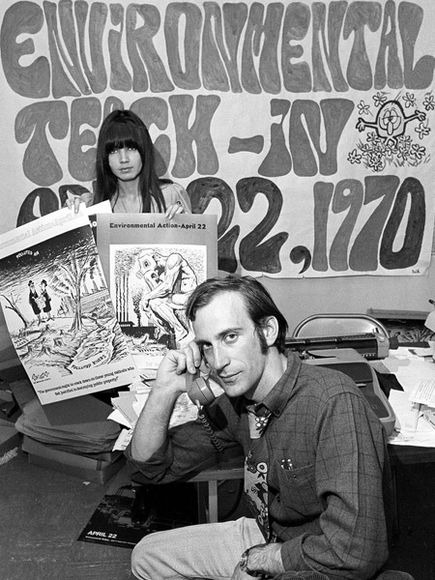
The First Earth Day really interests me. I love how people started coming together and helped create awareness. The environment is such an important thing, it has been here before we even were. It helps us survive, gives us so many things we need survive and before this day we were not even aware what we were doing, destroying it. This day was the first step into a new way of living. Bringing people together to fight for something that is so incredibly important. I think this has sparked such a big movement in this world and is such an important thing to keep up. Even to this day everyone still comes together on this day. Spreading more and more awareness through now design and photography, ways that a becoming more common. We have gone through such a change with technology but this is something that has remained the same. World awareness for such an important cause.
https://www.earthday.org/about/the-history-of-earth-day/
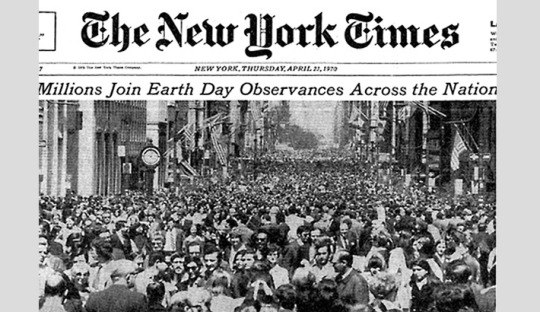

0 notes
Text
week four: readings
First things first, manifesto, 1964 (design is history) - response - Ken Garland as long with 20 other photography, designers and students.
What the Manifesto is about....
The manifesto touches on the idea of a staunch society within design and adverting in the 1960′s. Relating to the idea of how advertising has become for this we think we need rather than want. Bring the human element back into everyday design. The purpose of this manifesto was to create and bring back deign, using it for education purposes. Not to ruin our wants vs. needs. First things first talks about the how design needs to be used to promote the betterment of society. A positive side of society, not pressuring us into to purchasing things that we think we need and how our lives will be bad if we don’t purchase this object.
My response.....
I think this is a very strong manifesto, I couldn’t agree more with what it is talking about. My generation has grown up with a vast development in technology, things that we really don’t need but have been grown up to think we need. Through social media and designed advisements as massive digital billboards. We see the latest iPhone or accessory, our brains automatically think this is something we need to improve our life. We wouldn’t been looked at as successful or “cool” if we don’t have this object or technology. We are just pressured through the development of design and advertisement. I think we need to spread this idea more. It’s, at this rate, going to get worst. With more developed things coming our way, for the next generation they are going to get this things earlier on in life, as we have already seen.
I agree with manifesto,100% agree. I think we need to tone down the idea of needing all these things. Create positive adverting through design and photography. Rather than using it as a money grabbing scam. Using it to create change with all of our ecosystems.
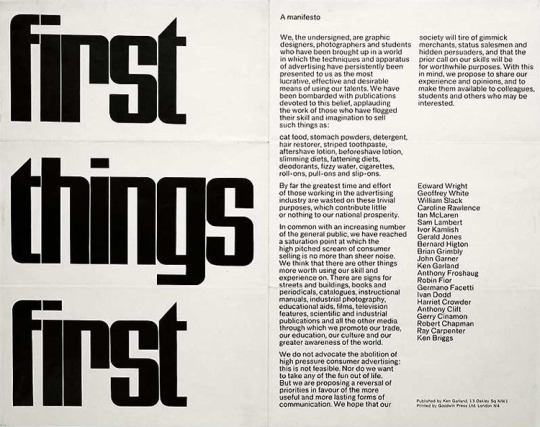
0 notes
Text
week four: class notes
Presentations about Waitangi Park, mana tonga, design and about the space
This weeks topic addresses critiques from the 1960s and their connections to both earlier and later 20th Century strategies for sustainable practices and critiques. We will start by reading the Introduction to Section 6: of the Design History Reader ( edited by Rebecca Houze and Grace Lees Maffei ), titled Sustainable Futures.
Reading the introduction of the reading for next week - response, finding within this reading what we enjoy looking at. Whether is be fine arts, design, photography.
Rebecca Houze, Section 6 Sustainable Futures (1960-2003) - response to introduction
Rebecca first talks about the arts and crafts movement and how it had such an impact on how we go about our world problems. Talking on the establishment of the Clear Air Act in 1963. Also mentioning the Environmental Protection Agency in 1970. 1970 was a great year for Environmental organisations as it was the first year Earth day was celebrated. Following this many organisations rose to help the environment and on 1990′s the first United Nations Earth Summit was held in Rio de Janeiro (1992). “The rapid depletion of natural resources, mass extinction of plant and animal life and global warming that threatens to change earth’s climate and destroy ecosystems around the world have been understood by many to be a direct result of the industrialism that gave a birth o modern design.”
This introductions talks about the idea of developing objects that will destroy our world. Cars, House, destroying the resources we have in the world and using them for our benefit. How the advertisement has ad a great impact on us. The way things we advertised. Purchasing and using, the amount of waste we were producing with our purchases and uses. All through this time of many changes lots of people were writing many readings and articles on how we need to take care of our natural world. Becoming one with nature not destroying it.
The movement of arts was there to critic whats going on and hopefully influencing to make a change.
0 notes
Text
week three: William Morris, piece two

WALTER CRANE (1845-1915) 'Neptune's Horses', 1893 (oil on canvas)
William Morris has capture a way of connecting animals to our natural world using horses and waves. I really love this pieces as it is so beautiful. His idea of being having a fellowship with nature is really expressed within this art. Using an oil canvas he has created a mesmerising piece for our eyes to follow. Morris has used a hand crafted canvas to show the beauty within the world around us. Following his idea and values of protecting natures ecosystem and its way of life. The natural world provides a lot for us and we wouldn’t be here without it. If we shared the same values as Morris I think this world we be a lot different. We would treat our natural world with compassion and care, not destroying it for our own benefit. Morris has done such a great job with all of his artworks and has keep to his values and principles.
“They believed that hand crafted objects were superior to those made by machine and that the rural craftsman had a superior lifestyle to those who slaved in the urban mills and factories. They were convinced that the general decline of artistic standards brought on by industrialisation was linked to the nation's social and moral decline.”
0 notes
Text
week three: William Morris, piece one
1. WILLIAM MORRIS (1834-1896) - 'Trellis' 1862 (pencil and watercolour sketch for wallpaper design)
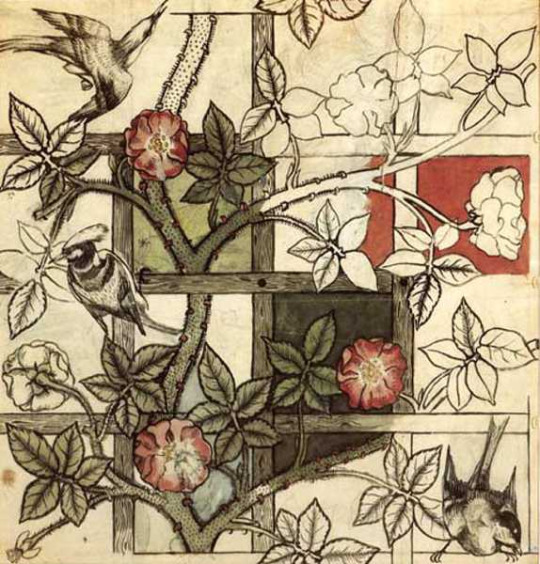
This piece of work follows the value Morris loves showing the beauty of the natural world, animals included. Using pencil and watercolour, Morris has created a beautiful piece of vines and flowers. Little bird sitting upon those. I feel as though it links to his idea of protecting the natural world. How God created it for us and now looking back if William were to see what has happened to it, it would be very sad. We have taken such a beautiful and natural world and made it our own, destroying it on the way. This arts speaks of caring and looking after the environment. Letting it be and capturing its delicateness through art pieces like this. “His patterns are inspired by his intimate knowledge of natural forms discovered through drawing and stylised through his detailed knowledge of historical styles.” Morris wanted people to see and preach about the fellowship we should have with nature, the fullness and completeness of a free and unfettered animal life. As our effects have effected the bio-diversity within these natural worlds.
“Morris is that in News from Nowhere, he showed us that an ecological society does not need to be an authoritarian one – a lesson many greens still have not learned.” - Morris taught us that you don’t need to aggressive. Just be kind to nature and let it be, becoming one with it a fellowship.
0 notes
Text
week three: second research - into photograph environments
Plastic Sushi: A Personal Photo Project For Environmental Awareness

Editorial and Commercial Photographer Craig Ferguson follows the idea of normality until you look closer. As you can see it isn’t normal sushi you can see plastic and waste used within the photograph.
Following the project Ferguson had noticed a massive increase in the amount of plastic in sand and in the water, while in Thailand. After doing some research he read that by 2050 there will be more plastic in the ocean than fish. After seeing this and watch a Netflix series called “Plastic Ocean”, he project “Plastic Sushi” was born. Ferguson started collecting little plastic pieces that could be seen as sushi or blend in. Creating a more in depth image, making people look again. “Ferguson used a 17-40mm or a 100mm macro lens, shot tethered into Capture One 12 and used window light and a reflector to capture photographs that make the viewer do a double-take.” The photography is very light and easy to take a quick glance at.
This is such a new and creative way to incorporate something we have been needing to create awareness of and change for so long. When you look at the image longer is starts to gross you out. That fact we are adding to this and polluting the ocean with such small things hopefully would start to get to the viewer. Ferguson has done such a great job at capturing this. Showing viewers the reality and truth of what is happening to our environment. The effect we are having on our ecosystem and bio-diversity. Adding more rubbish and plastic to our ocean will only kill more and more of our organisms. Effecting dramatically on our ecosystem. Projects like this need to be spread more and more, the more people that see this the better effect we can make and start to improve it. These sorts of projects show that photographers can really have a great effect on creating awareness. In a world that is becoming more technology based, photos and articles containing these can really be spread round. People sharing and sending it will help these be spread.
“Many at first glance simply look like commercial photographs of delicious sushi. It can take a moment to notice the plastic in some of the images, which makes the reality of plastic pollution in the ocean even more disturbing.”
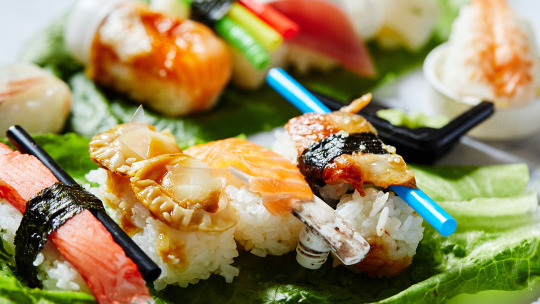
https://fstoppers.com/food/plastic-sushi-personal-photo-project-environmental-awareness-342763
0 notes
Text
week three: research into more photographers and ecology
“Hong Kong is one of the most densely populated cities on the planet, so green space is essential in order to promote health and well-being.”
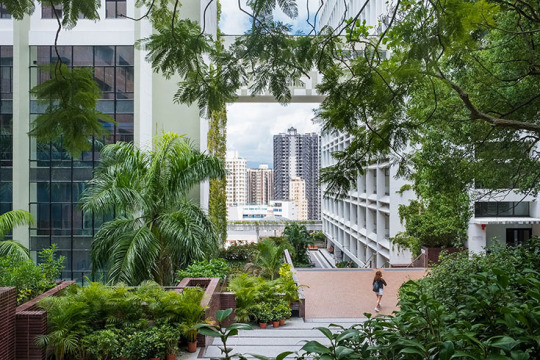
Photography by Annie Green-Armytage following the idea of creating a greener city as she attends Honk Kong University. Planting and adding greenery to roof tops at their university. Adding to creating more cleaner air and helping the wider environment while living in a big big city. “Facilities Management Office (FMO) continues making great efforts on improving greenery / landscape to provide a campus ambiance that University community can enjoy with pride.”
Annie is a garden photographer. Capturing the growing world of nature. With her photography we can see the beauty in greenery and how adding it to this world (after taking it away) can be so beneficial. Humans have ruined part of this world by building and destroying lots of forests. Lots of ecosystems rely on trees and forestry to survive even us as humans do. We are effecting many ecosystems with our deforestation. So with Annie’s photography she is helping with the awareness of the nature world, simply photographing gardens can show people the importance in them. In this project that Annie photographed she is following Hong Kong University and there Tree Inventory and Management system. A facility that manages trees and maintains the botanical name, size and health condition. Adding as many as 265 trees to Chinese gardens. The second phases of the project was putting them on the roof tops of universities, such as Hong Kong. Adding these trees is also helping to lower the temperature and leading to energy and carbon dioxide emission saving. This project is growing massively and having a photographer like Annie capture this can help to spread this awesome project around. Encouraging others.
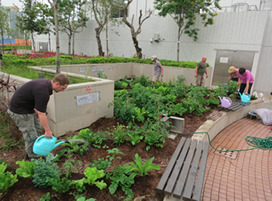
http://www.ecology.com/2018/03/01/igpoty/
https://www.cityu.edu.hk/sustainability/CampusFootprint/campusGreening.htm
https://www.professionalgardenphotographers.com/portfolios/anne-green-armytage
0 notes
Text
week three: waitangi park presentation
https://docs.google.com/presentation/d/1dp9BCH4NhVyHiYn1rcrp9mT0DGgJZPf_jpT1zb3PjQk/edit#slide=id.g544e85c196_1_5
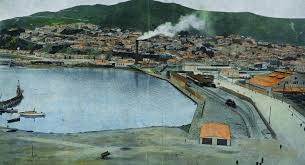

0 notes
Text
week two reading two
3. Mana Taonga - Respond to the class readings. Identify authors definitions , quotes and examples - expand your interpretation with reference to other relevant examples. Consider in particular the meaning of the concept in relation to environments and ecologies.
The practice of ecological art: Sacha Jerome Kagan
“We believe in a well-functioning system, cultural diversity and biodiversity exist in a state of mutual interaction”
The author first follows the idea of ongoing and impacted change we have had on our planet. The unsustainable development that has become very difficult to ignore. Then further talks about how ecological art / eco art has become a very big way of getting these awarenesses across to the world. How it has increased ways on which we talk about ecological change and things we need to change. The words ecological art became a big termed use in the 1990′s. To give a name to all the artists using art to talk about environmental effects, these artists started to emerge in the late 1960′s. Sacha talks about how a “eco-art-network” became a thing in 1999′s, an invitational network and mailing list which gathered more than one hundred practitioners to spread the movement or eco-art even further. Artists were subscribed into genres about the types of eco-art they would create.
Attention on the web of interrelationships in our environment. To the physical, biological, cultural and many more...
Creative works with use of natural materials
Reclaimed, restore, and remediate damaged environments
Informing the world about ecological dynamics
Re-envision ecological relationships, healing
These were just some of the many ways people/artists would use there art to create awareness of these environmental issues we as a society are facing. Sacha talks about different samples of art across the world, one talked about is the “trans-species art” by Lynne Hull. Following the restoration of wildlife habitats, conceived with local humans communities and tired and tested for suitability by non-humans client.
Further what the author talks about is different elements to add into ecological art. Things such as different scales of ecological relations, balancing, at multiple scales, the ego and the eco perspectives, connecting the level of everyday activity. In conclusion the author has really looked into and written a detailed writing on the idea and increase in ecological art. I think art is the best way to draw people in and get this idea of an increase in damage to the planet. In different ways and forms people do it, it will always be interesting and will make people want to find out more about solutions. It is in my opinion the best way to create awareness of these environmental problems.
0 notes
Text
week two reading one
3. Mana Taonga - Respond to the class readings. Identify authors definitions , quotes and examples - expand your interpretation with reference to other relevant examples. Consider in particular the meaning of the concept in relation to environments and ecologies.
Environmental Histories of Design: Towards a New Research Agenda
The author of this reading is discussing the idea of the interrelationship between environmental history and design history. Environmental historians have linked design and designers into there research. Furthering the conversation on how design can be linked to the wider effect on the environment but can also be used to help change it. Separating the two ideas of design being seen as the mater of ideology, where a designed object is something that makes people act or think in different ways. Matter of materiality, seeing design as something that has material consequences.
Environmental Historians use to focus on preserving the natural world, keeping it from artificial, the technologies and the human touch which seemed to destroy everything it came in contact with. Many people have helped conserve the natural world such as Donald Worster who created the piece called Dust Bowl. Which talked about the idea of commodification of nature and the resulting environmental crises on the America Great Plains (1930′s). Environmental history has expanded into something even greater as it has worked to tear down barriers. Such as challenging the neat divide between nature and culture. The author then starts to talk about how many environmental history researches has such depth that would help inspire many projects (design). Also raising a lot of questions such as: does design connect is to nature or to what nature means?
The author continues to talk about different design projects linking design and environmental history together. One example being The movement in the 1960′s called the plastic flamingo and what it represents. Following plastic and how is less than natural. The pink flamingo became a marker for bad taste and of being disconnected from nature. How this idea of plastic and the flamingo outnumbered the amount of flamingos 700-1. Many projects like this went from bad ideas to ways in which we can see the impact of our uses. How we are slowly but surely destroying the planet with our waste. The link between nature and artifice, how they are two sides of the same coin. To be continued...
0 notes